Blog
Some knowledge of cold rolled sheet that must be known
Release time:
Jan 10,2022
Information Summary:
Cold-rolled sheet is a product made of hot-rolled coil as raw material and rolled below the recrystallization temperature at room temperature. It is a hot-rolled strip of ordinary carbon structural steel, which is further cold-rolled to make a steel plate with a thickness of less than 4mm. Uses: automobile manufacturing, electrical products, locomotives and vehicles, aviation, precision instrumentation, food cans, etc. Cold-rolled products have high dimensional accuracy, and the performance and organization of the products can meet some special application requirements, such as electromagnetic properties, deep drawing properties, etc.
Due to the absence of heating during the production process, there are no defects such as pitting and iron oxide scales that often occur in hot rolling. The surface quality is good, the finish is high, and the dimensional accuracy of cold-rolled products is high. The performance and organization of the products can meet some special requirements.
The production process of cold-rolled billets is: hot-rolled coil (raw material) - pickling - cold rolling - degreasing - annealing - leveling - shearing - finished product delivery.
In addition to cold rolling and hot rolling, what is the difference between the two? Only by understanding the differences between the two can we better choose the right material.
The difference between hot rolling and cold rolling
1. Appearance and surface quality: Since the cold plate is obtained by the hot plate after the cold rolling process, and the cold plate will also undergo some surface finishing at the same time, the cold plate is better than the hot plate in terms of surface quality (such as surface roughness). Therefore, if there are higher requirements for the coating quality of the product, such as subsequent painting, the cold plate is generally selected, and the hot plate is divided into the pickled plate and the unpickled plate. The surface of the pickled plate has become a normal metallic color due to pickling, but the surface is still not as high as the cold plate without cold rolling. The unpickled plate usually has an oxide layer on the surface, which is black, or there is an iron oxide black layer. In layman's terms, it is like being baked by fire, and if the storage environment is not good, it is usually embroidered.
2. Performance: Under normal circumstances, the mechanical properties of hot plates and cold plates are considered indistinguishable in engineering. Although cold plates have certain work hardening during the cold rolling process, (but it is not ruled out that the mechanical properties are strict, so it needs to be treated differently). Cold plates usually have slightly higher yield strength and higher surface hardness than hot plates. The specific method depends on the degree of cold plate annealing. But in any case, the strength of annealed cold plates is higher than that of hot plates.
3. Forming performance, since the performance of hot and cold plates is basically not much different, the factors affecting the forming performance depend on the difference in surface quality. Since the surface quality is better from cold plates, the forming appearance of cold plates is usually better than that of hot plates.
Related News
Classification of galvanized sheet metal
2024-11-25
Contact an expert now for a solution!
Please fill in the form below and we will contact you as soon as possible.
LET'S MAKE YOUR PROJECT A REALITY
Contact Information
Dianzi Industrial Park, Boxing, Binzhou, Shandong,China

